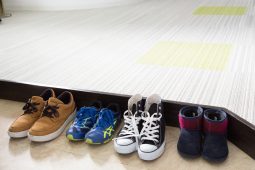If you want to make a good impression when you first start working at a company in Japan, then it is important to stick closely to the standard Japanese office dress code. The main rule if you are new to a company is to choose basic and simple designs for your outfit. Though this does take away the element of individual choice and expression, it does have the advantage of making your outfit choices super simple. You will never need to spend time wondering what outfit you are going to wear tomorrow. Here below are some basic guidelines on what is considered appropriate business attire for ladies and men in Japan.
For Ladies
In Japan a new office worker can expect to spend between 20,000 to 40,000 yen on a decent suit. Black, charcoal gray, and navy are the standard colors for business suits and they should be plain with no pattern. One thing to be aware of is that although men are supposed to unbutton their jackets when they sit down, women are supposed to keep their jackets buttoned at all times. Either pants or skirts with your suits are fine. If you choose a skirt, then you need to consider the length. When standing the skirt should hang about halfway over your knees, and when sitting it should not rise higher than 10 cms above the knee. For blouses and tops choose pale colors such as white, pale blue, or pale pink to present a clean, fresh appearance. For shoes, you should choose a reasonably comfortable pair of shoes as you will have to wear these every day. Closed-toe pumps are the standard choice, while sandals, mules, and flat shoes are considered too casual. Heels should be between 3–5 cms high and slim heels are not considered appropriate. For a new employee, black is a safe color choice for your shoes and skin color is a good choice for your tights. For bags, black, gray or brown are the usual color choices, and you should choose a size that can hold A4 size documents and your laptop computer. The bag should be plain, without too much decoration or overly ostentatious branding.
For Men
A decent good quality suit will cost you around 30,000 yen in Japan. For men, black is not considered an appropriate color for a business suit as it is more associated with formal occasions such as weddings or funerals. Choose unpatterned or striped suits in deep navy or charcoal gray. One commonly understood rule for men is that they should button their jacket when standing, and unbutton it when they sit down, so as to preserve the shape of the jacket and avoid getting wrinkles. Remember also when you fasten the buttons of your jacket that you should leave the bottom button undone. For your shirts, white or pale blue shirts with no pattern are a safe choice. A button-down shirt (i. e. a shirt with buttons on the collar) is not considered appropriate as it is associated with sportswear. Half-sleeved shirts are also not appropriate. For your footwear choose laced shoes or monk strap shoes (with a strap and buckle). Loafers and deck shoes are not seen as suitable. Shoes should be black or brown and socks can be black, navy, or gray.Belts should match your shoes in color. Neckties can be dark navy, dark red, or gray and patterns can be striped or finely spotted. When choosing a business bag find one that stands up on its own when you place it on the floor. If you bring a bag to a meeting and it flops over, it will not give a good impression, and you will need to constantly check it to make sure it does not fall. Gray, black, brown or navy are all good colors for a bag, and remember to get one big enough for A4 size documents and your PC.

Dress Code Variations
The guidelines given above represent the common standard for office attire in Japan. However, the rules will vary by company. Some companies give more leeway to their employees and allow an “office casual” style. And in recent years a more liberal style of summer dress code called “cool biz” which allows for short sleeve shirts and no neckties is becoming more common.
The best way to judge the dress code of your company is to look at what your coworkers are wearing and copy their style!








